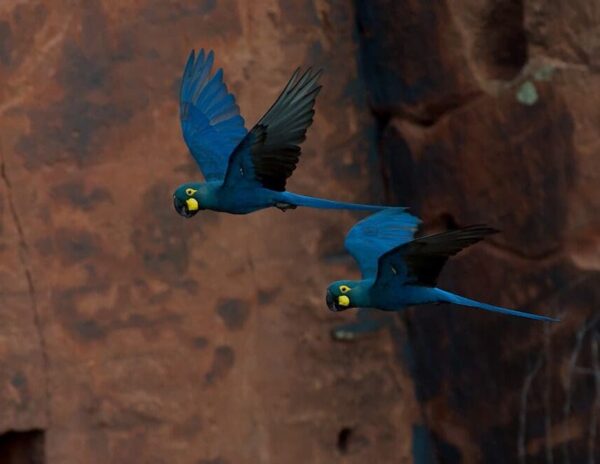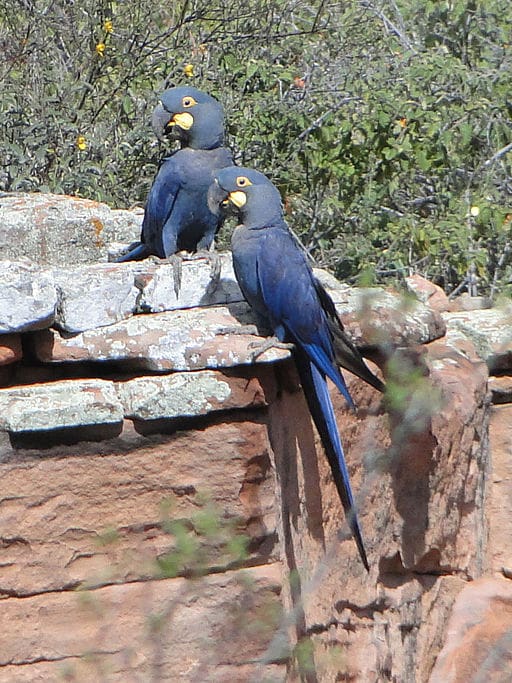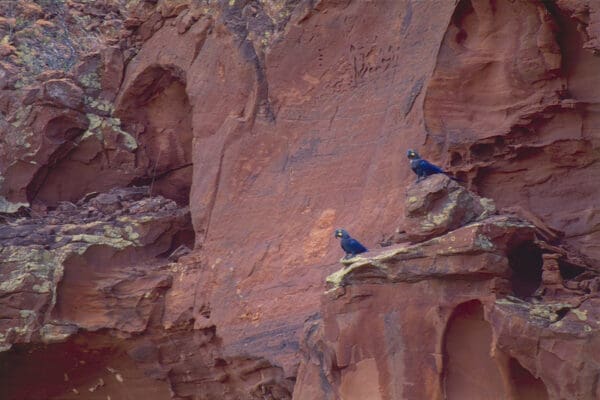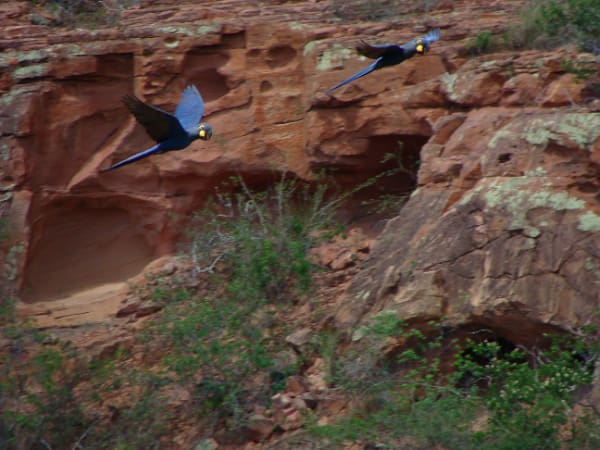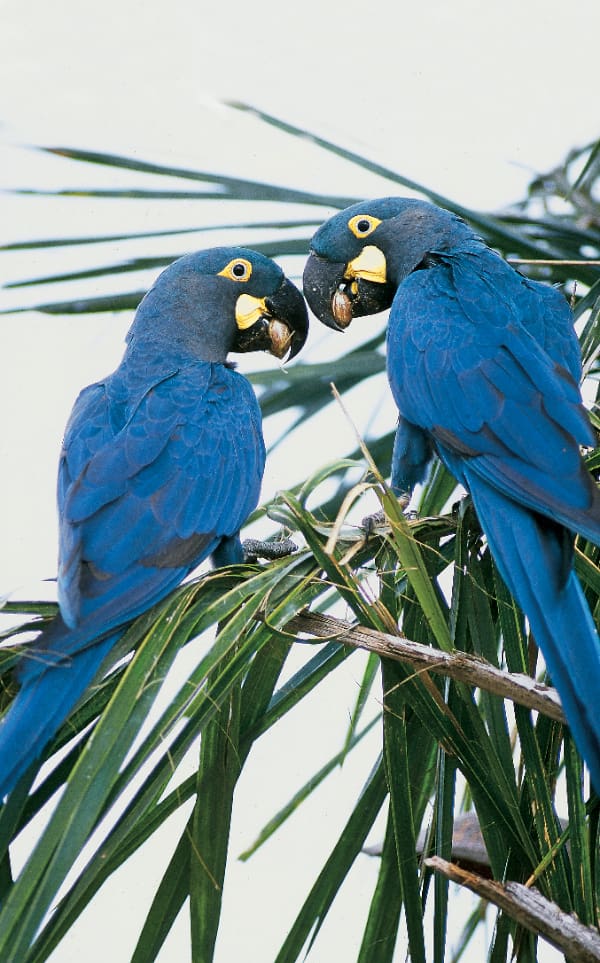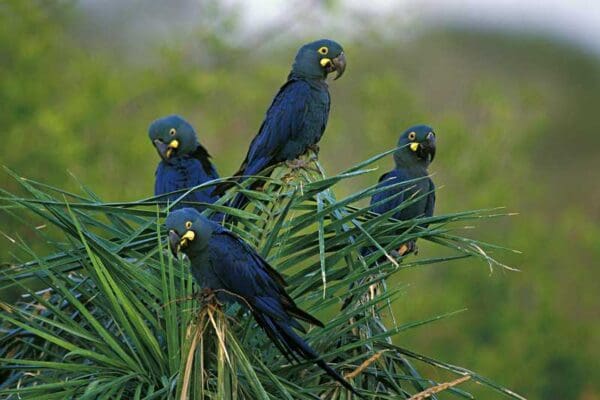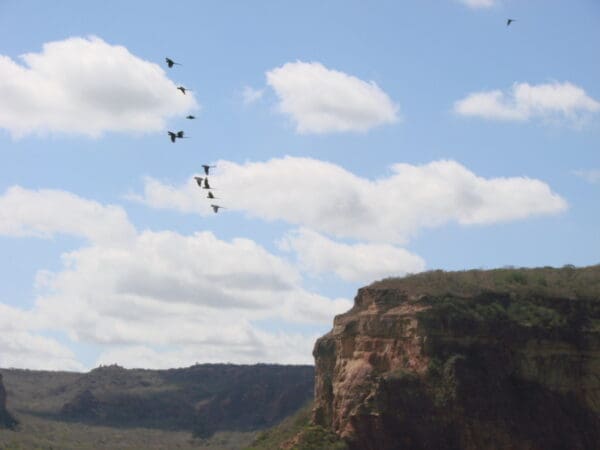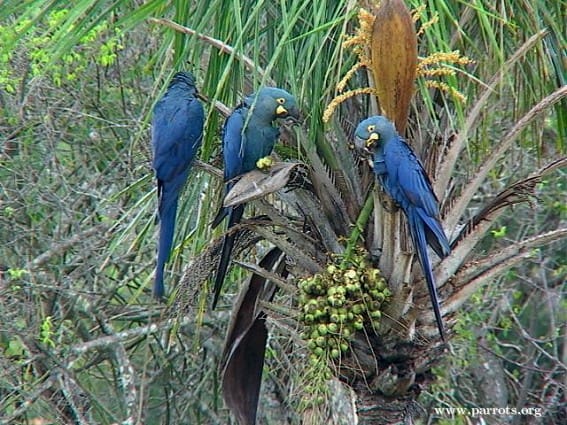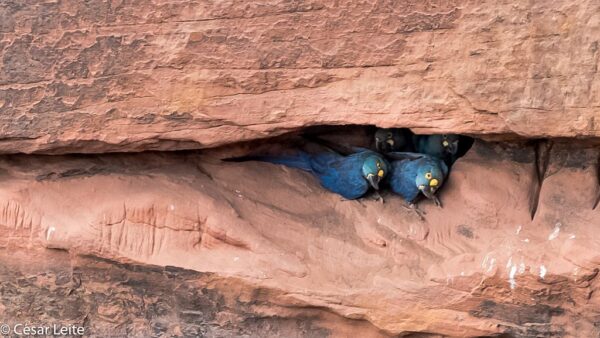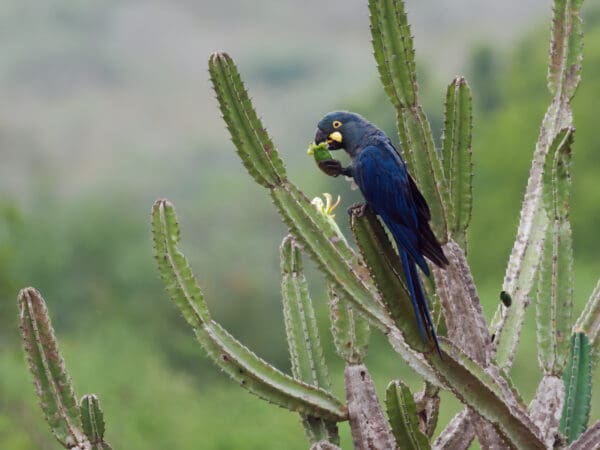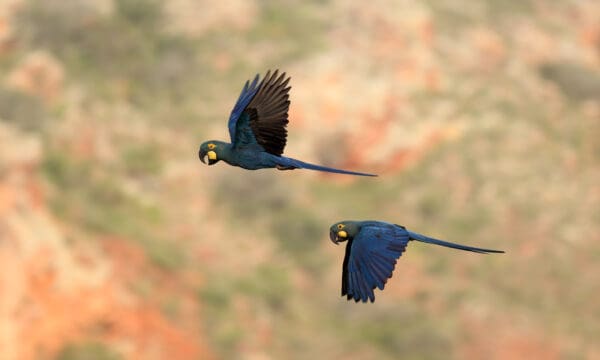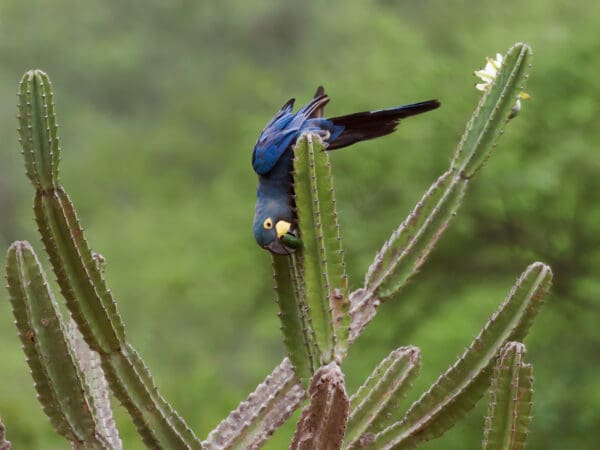Lear’s Macaw
Also known as:
Indigo Macaw
Also known as:
Indigo Macaw
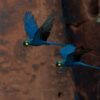
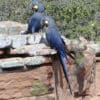

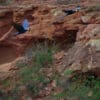
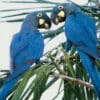
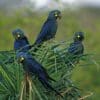
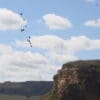
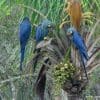
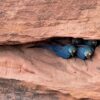
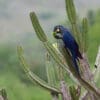

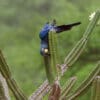
DID YOU KNOW?
The Lear’s Macaw is dependent on cliff-faces in gorges for nest sites.

Anodorhynchus

leari
Size:
70-75 cm (27.3-29.25 in)
Weight:
940-950 g (33-33.25 oz)
Subspecies including nominate:
one
Colour Adult:
Both adults green wash on head and neck; upperparts purple/blue; body dark blue to purple/blue. Beak grey/black. Bare eye ring yellow, pale yellow teardrop-shaped lappet at sides of lower beak, but not reaching beneath mandible. Eye dark brown.
Colour Juvenile:
As in adult but with shorter tail and paler skin surrounding beak and eyes.
Call:
Croaking and screeching sounds; weaker and higher pitched than Hyacinth Macaw.
More Information:
Content Sources:
CITES
Avibase
BirdLife International
Cornell Lab of Ornithology/Birds of the World
A Guide to Parrots of the World, Juniper and Parr, 1998
Article “Breeding the Lear’s Macaw at the Al Wabra Wildlife Preservation,” by Simon Bruslund Jensen, Ryan Watson and Dr. Sven Hammer, Australian Birdkeeper, June-July, 2007.
Parrots: Status Survey and Conservation Plan 2000-2004, Snyder, McGowan, Gilardi and Grajal, 2000.
Parrots of the World, Forshaw and Cooper, 1989.
Parrots of the World, Forshaw, 2006.
Parrots in Aviculture, Low, 1992.
Captive Status:
Extremely rare.
Longevity:
60 yrs
Housing:
A large enclosure 15 m (50 ft) long in off breeding season – keeping permanently indoors not recommended.
Diet:
Soaked or sprouted seed, walnuts, peanuts, pecans, Brazil nuts and pine nuts; fresh corn, cooked maize; fruits such as banana, oranges; nutritionally complete pellet for macaws.
Enrichment:
Large aviary with tree trunk in middle decorated weekly with fresh branches of pine, fir or eucalyptus, large chewable toys made for macaws, the more complex the better, also provide overhead misters for bathing.
Nest Box Size:
—
Clutch Size:
2 or 3
Fledging Age:
Not recorded but probably about 13 weeks.
Hatch Weight:
—
Peak Weight:
—
Weaning Weight:
—
World Population:
About 1700 individuals (2018). Slowly increasing.
IUCN Red List Status:
Endangered
CITES Listing:
Appendix I
Threat Summary:
A BirdLife ‘restricted-range’ species. The species may always have been rare but human activity has adversely affected it, possibly for several hundred years. Remains threatened by clearance and non-regeneration of licurí palm, and hunting for food was evidently also serious in the past. Trapping for trade, although illegal, is an ever-present danger.
Range:
Confined to the Raso da Catarina plateau, NE Bahia, Brazil.
Habitat:
Found in dry, rugged caatinga (thorn scrub) terrain. Mostly in areas with Syagrus coronata palms.
Wild Diet:
Staple food item is Syagrus palm nuts, also fruits of Jatropha pohliana, Spondias tuberosa, Dioclea and flowers of Agave and seeds of Melanoxylon. Liquid from unripe palm fruit is thought to be major source of moisture.
Ecology and Behaviour:
Gregarious and in flocks. Roost in communes in weathered crevices near top of sandstone ravines. Leaves in groups to fly, foraging before dawn and returning at dusk.
Clutch and Egg Size:
2 or 3 eggs, 57.0 x 38.5 mm (2.2 x 1.5 in).
Breeding Season:
October-January. Nest is in cliff tunnel.
Related Links:
—
